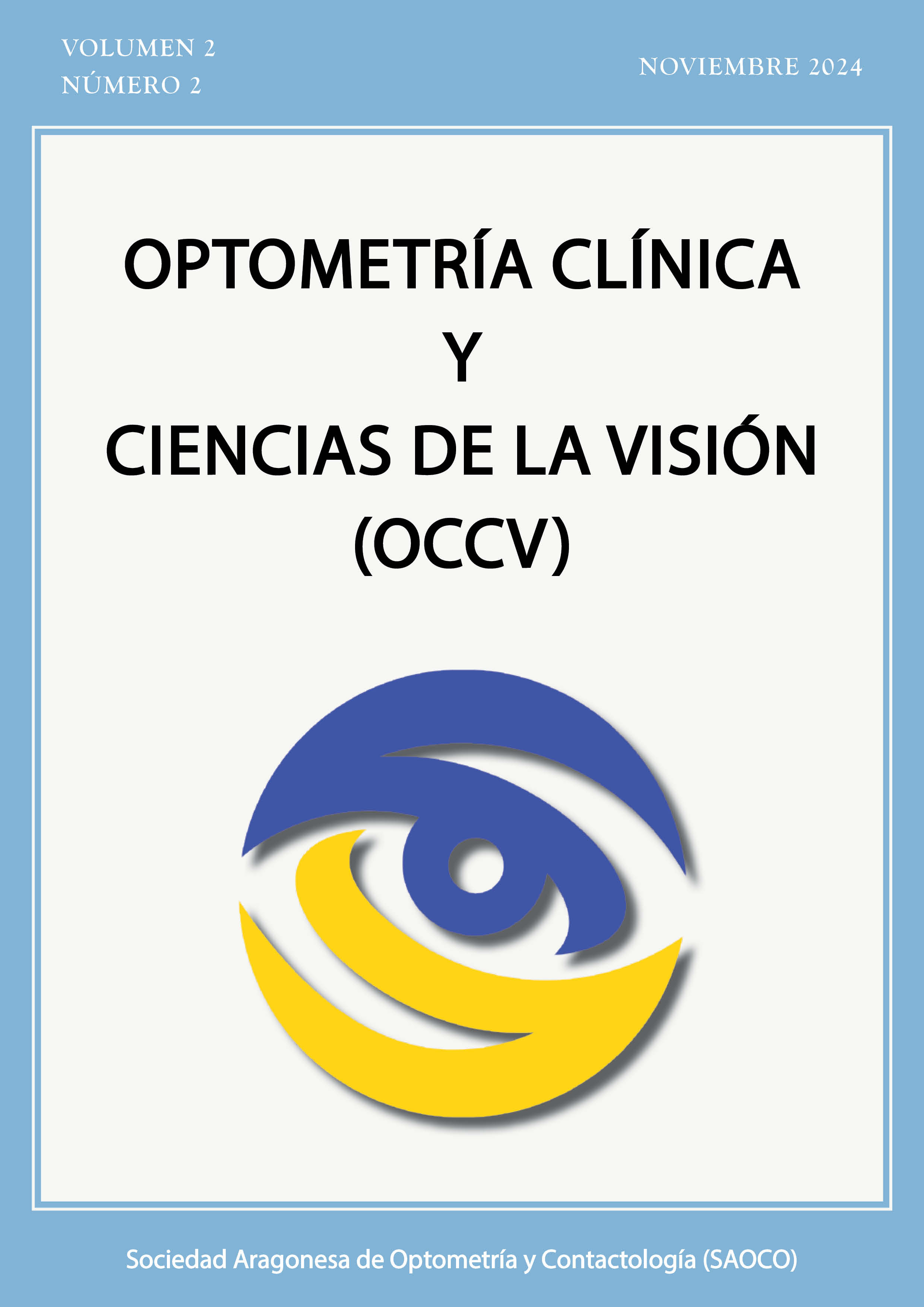Visual and Eye Dysfunctions in Prematurity
Keywords:
Prematurity, Refractive errors, Strabismus, Visual dysfunction, Retinophaty, AmblyopiaAbstract
Relevance: This study compiles all the research conducted in recent years on the search for possible visual dysfunctions related to prematurity (a high-prevalence risk factor) in order to facilitate early diagnosis and ensure more accurate follow-up and treatment for these patients.
Abstract: In this literature review, a total of 198 research studies published in the last 10 years have been analysed, of which 10 have been included that meet the scientific evidence guidelines explained in this paper. After the search with certain criteria, the results show a high percentage of Retinopathy of prematurity as the most prevalent pathology in prematurity, followed by a high rate of refractive errors, such as astigmatism, hypermetropia and myopia and a higher incidence of strabismus, nystagmus and amblyopia. There are significant alterations in brain areas involved in the visual system involved in processes such as visual recognition and memory, as well as in motor processing, leading to alterations in ocular motility and stereopsis. In addition, there is evidence of a delay in the process of emmetropisation and in the development of the accommodative/vergence system, also related to prematurity. These results are supported by the literature and when compared with each other. Controversy has been found in relation to other studies, especially in the case of strabismus, amblyopia and non-significant results in ocular measurements such as vitreous and anterior chamber thickness. These findings related to preterm birth show the importance of vision screening in the pediatric population from an early age for early diagnosis and treatment and to improve the quality of life of these patients.
References
RAE. 23.7 en línea. 2014 [cited 2024 Mar 14]. Diccionario de la Lengua Española.
OMS. Nacimientos Prematuros. 2023 [cited 2024 Mar 14]. Organización Mundial de la Salud.
Cerisola A, Baltar F. Complicaciones neurológicas de la prematuridad Artículo especial-Revisión ISSN. Vol. 83, MEDICINA (Buenos Aires). 2023.
Katz X. Prematuridad y visión. Revista médica Clínica Las Condes. 2010;21:978–83.
Zierden HC, Shapiro RL, DeLong K, Carter DM, Ensign LM. Next generation strategies for preventing preterm birth. Vol. 174, Advanced Drug Delivery Reviews. Elsevier B.V.; 2021. p. 190–209.
García Peláez MI, Arteaga Martínez SM, Flores Peña LG, Núñez Castruita A, Martínez Burckhardt RJ, Amador Hernández G. Sección 2. Organogénesis. In: Arteaga MArtínez SM, García Peláez MI, editors. Embriología humana y biología del desarrollo. 3rd ed. México: Editorial médica Panamericana; 2021. p. 475–84.
Verdijk RM, Herwig-Carl MC. Fetal and Neonatal Eye Pathology. Fetal and Neonatal Eye Pathology. Springer International Publishing; 2020. 1–177 p.
García-Feijoó J, Pablo-Júlvez LE. Embriología. Desarrollo del globo ocular y los anexos. In: García-Feijoo J, Pablo-Júlvez L.E, editors. Manual de Oftalmología. Barcelona: Elsevier; 2012. p. 4–721.
Carlson BM. Òrganos de los sentidos. In: Peña Melian ÁL, Viejo Tirado F, Carlson BM, editors. Embriología humana y biología del desarrollo. 4th ed. Barcelona: Elsevier; 2009. p. 255–78.
Ortueta-Olartecoechea A, Torres-Peña JL, Muñoz-Gallego A, Torres-Valdivieso MJ, Vázquez-Román S, De la Cruz J, et al. Retinal ganglion cell complex thickness at school-age, prematurity and neonatal stressors. Acta Ophthalmol. 2022 Sep 1;100(6):e1253–63.
Liu CG, Cao JK, Wang YH, Wang D, Han T, Li QP, et al. A bibliometric analysis and visualization of retinopathy of prematurity from 2001 to 2021. 2023.
Balasubramanian S, Beckmann J, Mehta H, Sadda SVR, Chanwimol K, Nassisi M, et al. Relationship between Retinal Thickness Profiles and Visual Outcomes in Young Adults Born Extremely Preterm: The EPICure@19 Study. Ophthalmology. 2019 Jan 1;126(1):107–12.
Wang Y, Pi LH, Zhao RL, Zhu XH, Ke N. Refractive status and optical components of premature babies with or without retinopathy of prematurity at 7 years old. Transl Pediatr. 2020 Apr 1;9(2):108–16.
Fieß A, Dautzenberg K, Gißler S, Mildenberger E, Urschitz MS, Elflein HM, et al. Prevalence of strabismus and risk factors in adults born preterm with and without retinopathy of prematurity: results from the Gutenberg Prematurity Eye study. British Journal of Ophthalmology. 2024;
Comberiati AM, Graziani M, Malvasi M, Trovato Battagliola E, Compagno S, Malvasi V, et al. Effectiveness of diagnosis and early treatment of ocular motili-ty alterations in premature infants Observational study. Clin Ter. 2023;174(1):48–52.
Jain S, Sim PY, Beckmann J, Ni Y, Uddin N, Unwin B, et al. Functional Ophthalmic Factors Associated with Extreme Prematurity in Young Adults. JAMA Netw Open. 2022 Jan 28;5(1):E2145702.
Xie X, Wang Y, Zhao R, Yang J, Zhu X, Ouyang L, et al. Refractive status and optical components in premature infants with and without retinopathy of prematurity: A 4- to 5-year cohort study. Front Pediatr. 2022 Nov 17;10.
Mocanu V, Horhat R. Prevalence and risk factors of amblyopia among refractive errors in an Eastern European population. Medicina (Lithuania). 2018 Mar 1;54(1).
Zhou L, Zhao Y, Liu X, Kuang W, Zhu H, Dai J, et al. Brain gray and white matter abnormalities in preterm-born adolescents: A meta-analysis of voxel-based morphometry studies. PLoS One. 2018 Oct 1;13(10).
Zhu X, Zhao R, Wang Y, Ouyang L, Yang J, Li Y, et al. Refractive state and optical compositions of preterm children with and without retinopathy of prematurity in the first 6 years of life. Medicine (United States). 2017 Nov 1;96(45).
Fledelius HC, Bangsgaard R, Slidsborg C, Lacour M. Refraction and visual acuity in a national Danish cohort of 4-year-old children of extremely preterm delivery. Acta Ophthalmol. 2015 Jun 1;93(4):330–8.
Horwood AM, Toor SS, Riddell PM. Convergence and accommodation development is preprogrammed in premature infants. Invest Ophthalmol Vis Sci. 2015;56(9):5370–80.
Fieß A, Grabitz SD, Mildenberger E, Urschitz MS, Fauer A, Hampel U, et al. A lower birth weight percentile is associated with central corneal thickness thinning: Results from the Gutenberg Prematurity Eye Study (GPES). J Optom. 2023 Apr 1;16(2):143–50.
Deng Y, Yu CH, Ma YT, Yang Y, Peng XW, Liao YJ, et al. Analysis of the clinical characteristics and refraction state in premature infants: A 10-year retrospective analysis. Int J Ophthalmol. 2019;12(4):621–6.
Al Oum M, Donati S, Cerri L, Agosti M, Azzolini C. Ocular alignment and refraction in preterm children at 1 and 6 years old. Clinical Ophthalmology. 2014 Jul 2;8:1263–8.
Rasoulinejad S, Pourdad P, Pourabdollah A, Arzani A, Geraili Z, Roshan H. Ophthalmologic outcome of premature infants with or without retinopathy of prematurity at 5-6 years of age. J Family Med Prim Care. 2020;9(9):4582.
Yang Z, Lu Z, Shen Y, Chu T, Pan X, Wang C, et al. Prevalence of and factors associated with astigmatism in preschool children in Wuxi City, China. BMC Ophthalmol. 2022 Dec 1;22(1).
Merchán S, Merchán G, Dueñas M. Influence of prematurity on the “emmetropization” process. Elsevier España SLU. 2014;83–9.
Petriçli İS, Kara C, Arman A. Is being small for gestational age a risk factor for strabismus and refractive errors at 3 years of age? Turkish Journal of Pediatrics. 2020;62(6):1049–57.
Pétursdóttir D, Holmström G, Larsson E. Refraction and its development in young adults born prematurely and screened for retinopathy of prematurity. Acta Ophthalmol. 2022 Mar 1;100(2):189–95.
Leung MPS, Thompson B, Black J, Dai S, Alsweiler JM. The effects of preterm birth on visual development. Vol. 101, Clinical and Experimental Optometry. Blackwell Publishing Ltd; 2018. p. 4–12.
Additional Files
Published
Issue
Section
Categories
License
Copyright (c) 2024 Clinical Optometry and Vision Science

This work is licensed under a Creative Commons Attribution-NonCommercial 4.0 International License.



